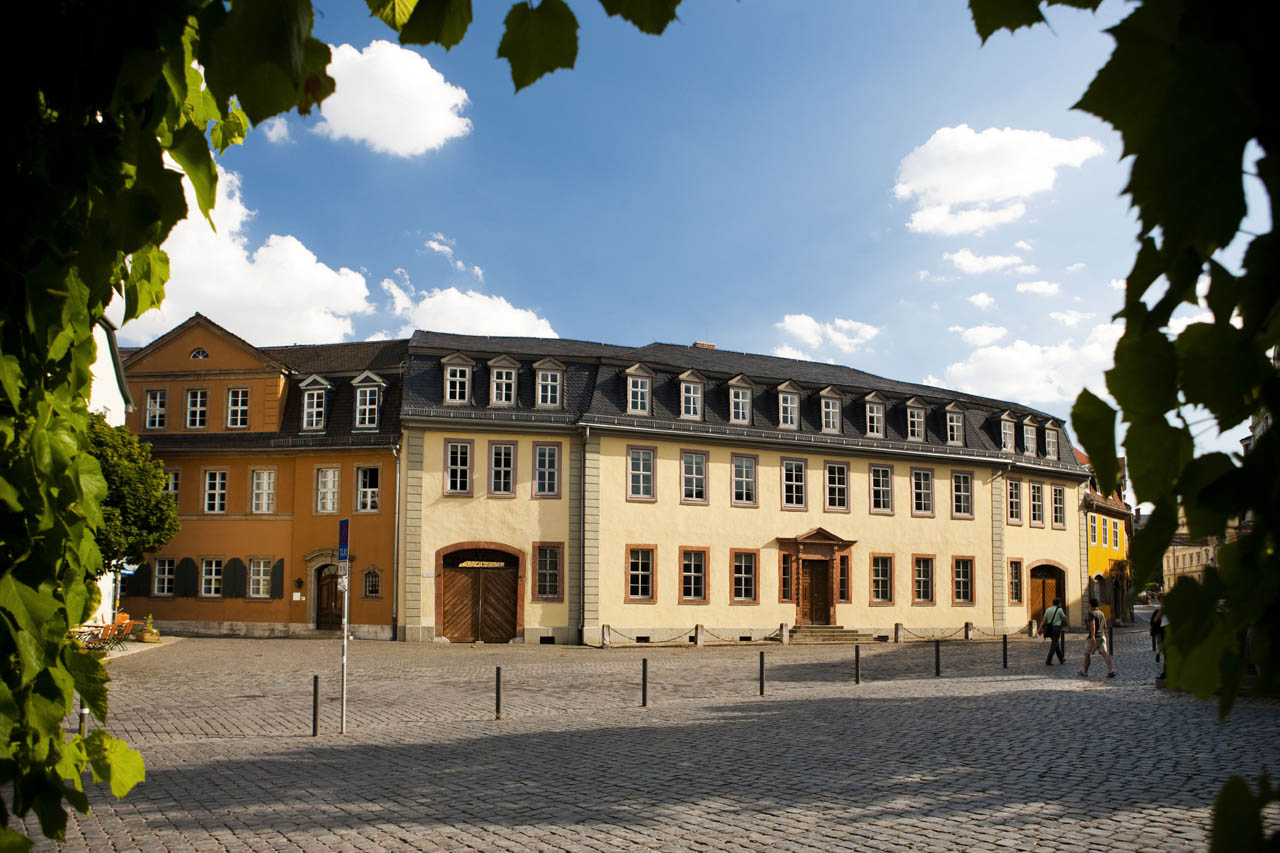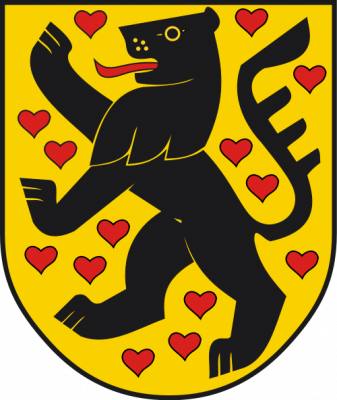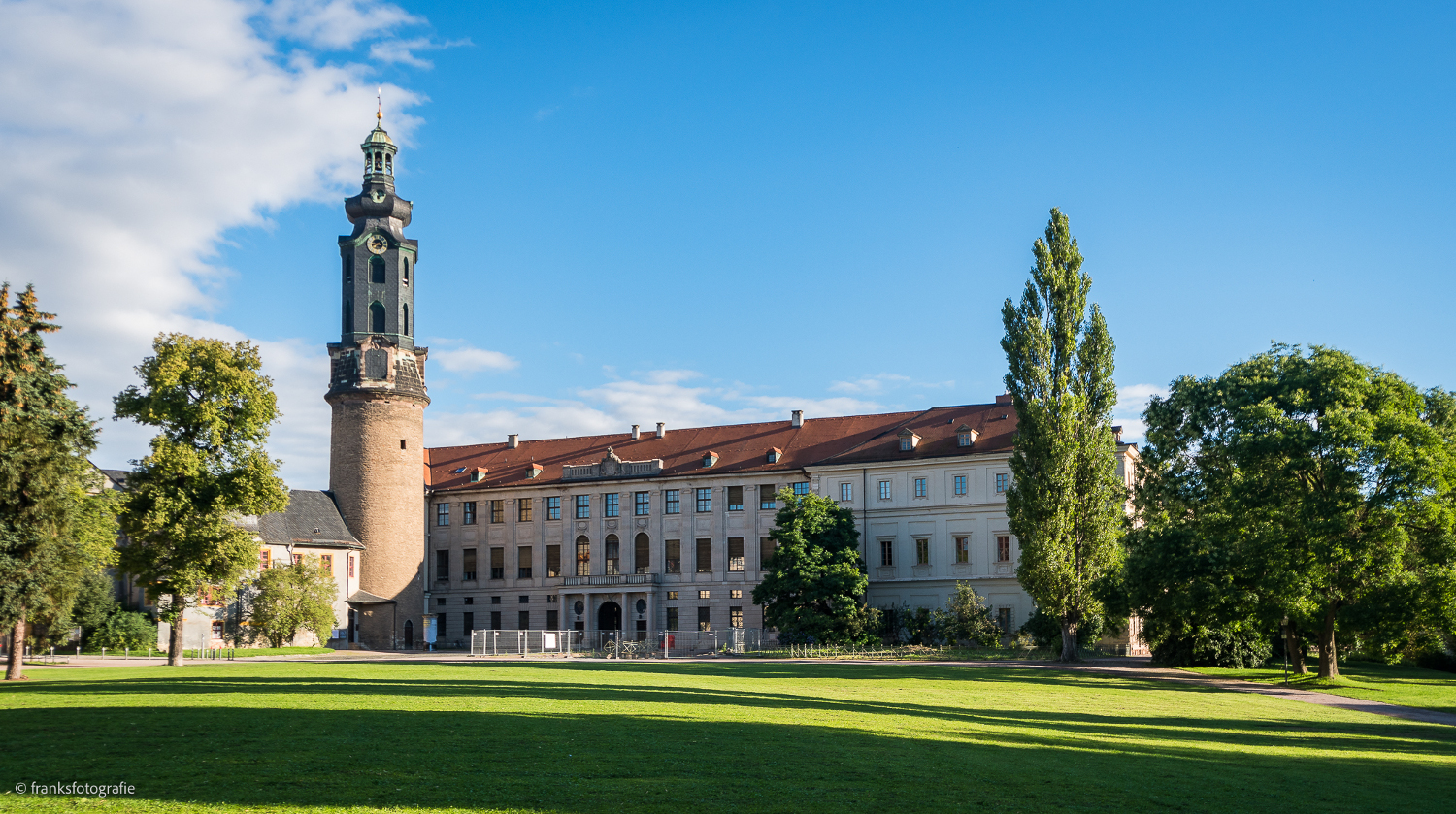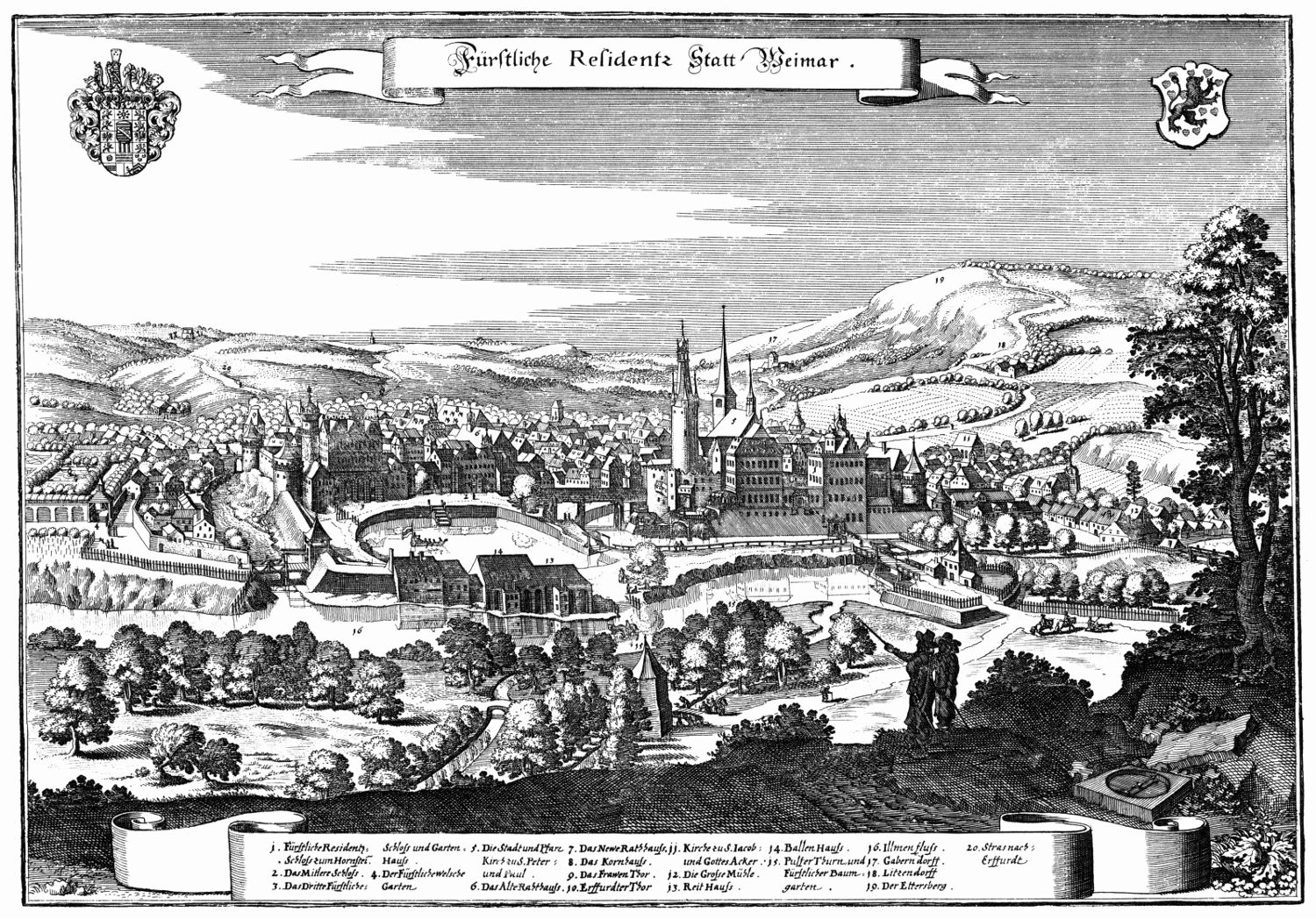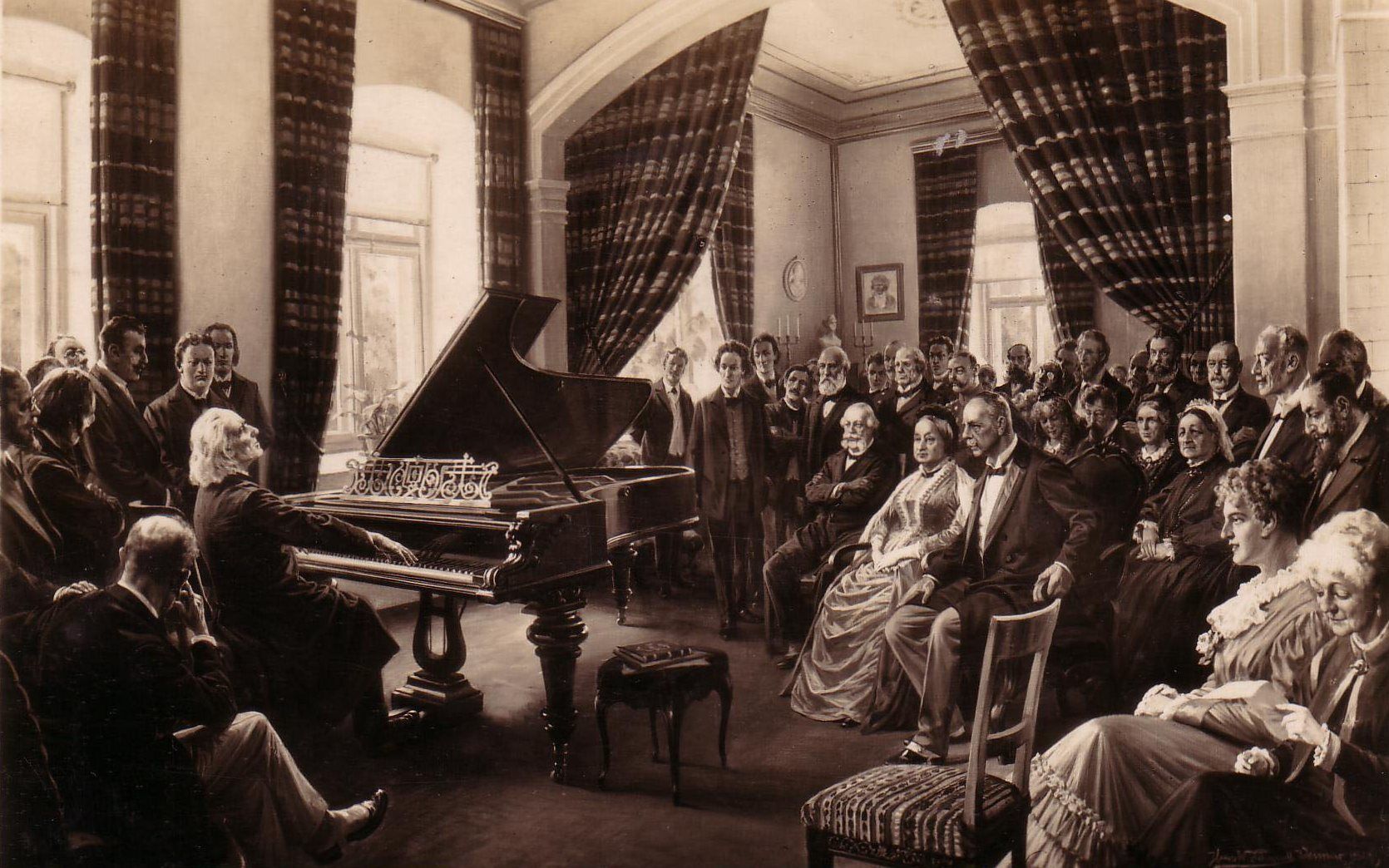
 Germany
Germany

 International cities
*European Capital of Culture
International cities
*European Capital of Culture

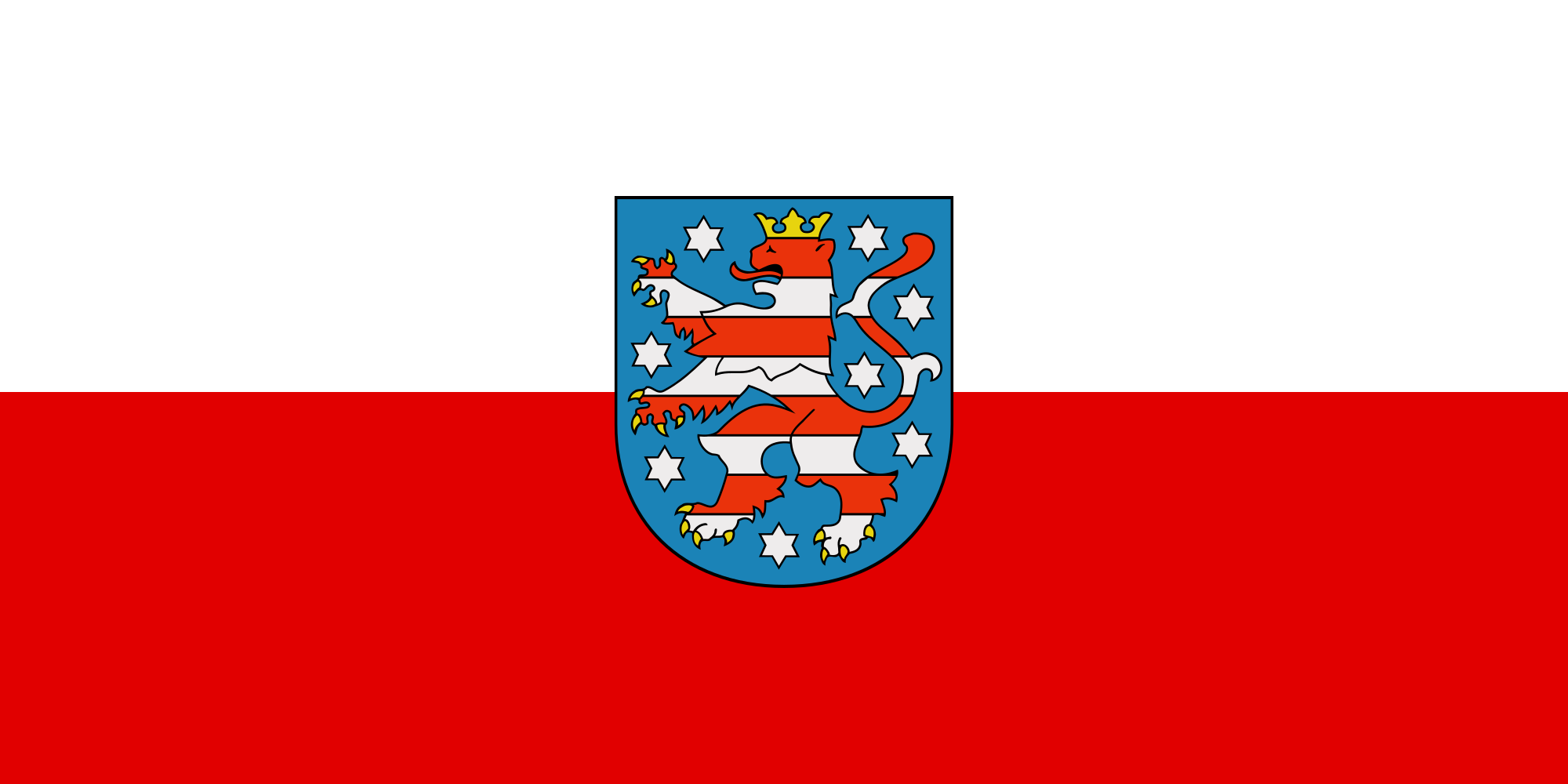 Thuringia
Thuringia

 Vacation and Travel
Vacation and Travel

 World Heritage
World Heritage
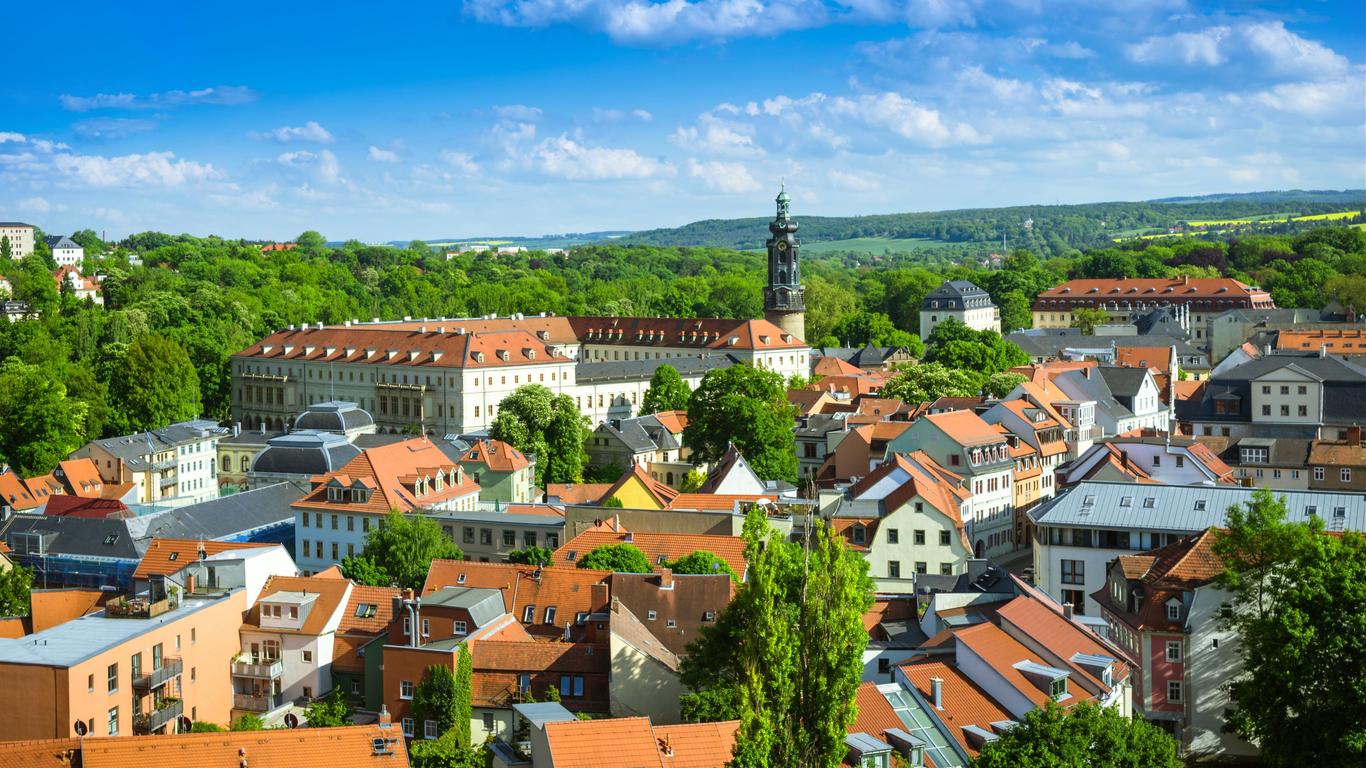
就像雅典曾是欧洲文化的心脏一样,魏玛也有过作为德国文化中心的辉煌时代。两位文坛巨擘歌德和席勒曾在这里创作出不朽的文学作品,李斯特等世界闻名的 艺术家也曾在这里生活。魏玛代表着古典文化的传统,被人们赞誉为德国的雅典。魏玛位于图林根州府以东20公里,人口6万,是座风景优美、古色古香的城市。 它依偎在埃特斯山的怀抱中,清澈的伊尔姆河水从身边静静的流过,掩映在树木花丛中的中世纪建筑物,以及富有田园诗风味的公园,还有矗立在公园和街头的雕 像,都给魏玛增添了无穷的魅力。丹麦童话作家安徒生曾说过,魏玛不是一座有公园的城市,而一座有城市的公园。 当然,魏玛的魅力更在于它的悠久历史和文化传统。公元975年,皇帝奥托二世在这里大会诸侯,使这座千年古城首次载入史册。从1547年起,魏玛成为萨克 森-魏玛公国(后为大公国)的京城。城里的故宫和郊区的贝尔维德雷宫及梯夫特宫就是当年留下的宫邸。这个诸侯国小国寡民,无力争雄,于是历代邦君都把注意 力集中在文化艺术方面。公爵卡尔·奥古斯特(1758-1828)特意邀请在文坛初露才华的歌德来担任大臣。1775年年仅26岁的歌德来到魏玛,在这里 一直生活到1832年逝世。他的非凡才华,为魏玛开创了第一个文化上的黄金时代。歌德不少千古传世的作品都是在这里创作的,他的巨著《浮士德》也完成于魏 玛。诗人和剧作家席勒也两度在魏玛生活,并在这里写了剧本《威廉·退尔》。此剧歌颂了瑞士传奇式的自由英雄,鼓舞了人民反抗专制的斗争意志。然而受到奥古 斯特公爵资助的不仅有歌德和席勒。
魏玛(德语:Weimar)位于德国中部的联邦州图林根,埃特斯山的山脚,伊尔姆河的河畔。德国历史上第一个统一共和国——魏玛共和国和历史上第一部民主宪法正是在这里诞生。这里是现代设计——包豪斯的发源地,对世界艺术与设计的发展有着巨大的贡献。虽然它仅有6万人口,但却是一座风景优美、古色古香充满着文化气息的都市。这里有着各种各样的博物馆,在宫殿博物馆和市立博物馆里有很多国家收藏的艺术品。在德国的国家大剧院前面有著名雕刻家恩斯特·里彻尔所创作的歌德和席勒纪念雕像。1998年,“古典魏玛”(Classical Weimar)被列为世界文化遗产。
Weimar ist eine kreisfreie Stadt in Thüringen in Deutschland, die vor allem für ihr kulturelles Erbe bekannt ist. Weimar liegt an einem Bogen der Ilm südöstlich des Ettersberges, des mit 478 Metern höchsten Berges im Thüringer Becken. Die Stadt ist nach Erfurt, Jena und Gera die viertgrößte Thüringens und liegt etwa auf halbem Wege zwischen Erfurt im Westen und Jena im Osten.
Weimar ist ein Mittelzentrum, das zum Teil Funktionen eines Oberzentrums erfüllt und seit 2004 offiziell als Universitätsstadt bezeichnet wird. Neben der Bauhaus-Universität beherbergt die Stadt die Hochschule für Musik Franz Liszt und die Herzogin Anna Amalia Bibliothek. Außerdem haben in Weimar zahlreiche Behörden ihren Sitz, zum Beispiel das Thüringer Oberverwaltungsgericht, das Thüringer Landesverwaltungsamt, der Thüringer Verfassungsgerichtshof und das Thüringische Landesamt für Denkmalpflege und Archäologie.
Zum kulturellen Erbe der Stadt gehören neben den Traditionen der Weimarer Klassik um Wieland, Goethe, Herder und Schiller auch das Bauhaus und die Nationalversammlung von 1919, von der sich der Name der Weimarer Republik herleitet, sowie eine Vielzahl weiterer hochrangiger kultureller Hinterlassenschaften aus dem 16. Jahrhundert (Lucas Cranach d. Ä. und d. J.), 17. Jahrhundert (Gründung der Fruchtbringenden Gesellschaft), 18. Jahrhundert (Johann Sebastian Bach), 19. Jahrhundert (genannt seien Franz Liszt, Richard Strauss, Friedrich Nietzsche, die Landschaftsmaler der Weimarer Malerschule an der Großherzoglich-Sächsischen Kunstschule Weimar) und 20. Jahrhundert (Harry Graf Kessler, Henry van de Velde). Das Bauhaus und seine Stätten in Weimar (und Dessau) wurden 1996, das „klassische Weimar“ im Dezember 1998 von der UNESCO zum Weltkulturerbe erklärt. Die zuletzt genannte Entscheidung wurde begründet mit der „großen kunsthistorischen Bedeutung öffentlicher und privater Gebäude und Parklandschaften aus der Blütezeit des klassischen Weimar.“[2] Zudem wurde der im Goethe- und Schiller-Archiv in Weimar aufbewahrte Nachlass Goethes 2001 von der UNESCO in das kulturelle Gedächtnis der Menschheit als Weltdokumentenerbe (Memory of the World) aufgenommen. Zum Weltdokumentenerbe zählen seit 2015 auch frühe Schriften der Reformation, von denen ein Teil in der Herzogin Anna Amalia Bibliothek in Weimar aufbewahrt werden. In über 25 Museen und Ausstellungsorten wird das kulturelle Erbe von nationalem und internationalem Rang präsentiert.
Weimar war seit 1547/52 Haupt- und Residenzstadt des Herzogtums Sachsen bzw. Sachsen-Weimar, später Sachsen-Weimar-Eisenach (seit 1815: Großherzogtum). Dies war der erste Staat Deutschlands, der sich eine Verfassung gab (1816). Von 1920 bis 1952 war Weimar die Hauptstadt des Landes Thüringen. 1999 war sie Kulturhauptstadt Europas.
ヴァイマル(Weimar ドイツ語発音: [ˈvaɪmaɐ])は、ドイツ・テューリンゲン州の都市で、主要な歴史的文化都市のひとつ。ワイマール、ヴァイマール、ワイマル、ヴァイマー、ワイマー、ウァイマーなどとも表記される。慣用的に「ワイマール」と表記されることが多い。
面積は84,27 km2、人口は約64,000人。主な宗教はキリスト教プロテスタントルター派。1999年には欧州文化首都に選ばれている。
Weimar (German pronunciation: [ˈvaɪmaɐ̯]; Latin: Vimaria or Vinaria) is a city in the federal state of Thuringia, Germany. It is located between Erfurt in the west and Jena in the east, approximately 80 kilometres (50 miles) southwest of Leipzig, 170 kilometres (106 miles) north of Nuremberg and 170 kilometres (106 miles) west of Dresden. Together with the neighbour-cities Erfurt and Jena it forms the central metropolitan area of Thuringia with approximately 500,000 inhabitants, whereas the city itself counts a population of 65,000. Weimar is well known because of its large cultural heritage and its importance in German history.
The city was a focal point of the German Enlightenment and home of the leading characters of the literary genre of Weimar Classicism, the writers Johann Wolfgang von Goethe and Friedrich Schiller. In the 19th century, famous composers like Franz Liszt made a music centre of Weimar and later, artists and architects like Henry van de Velde, Wassily Kandinsky, Paul Klee, Lyonel Feininger and Walter Gropius came to the city and founded the Bauhaus movement, the most important German design school of the interwar period. However, the political history of 20th-century Weimar was inconsistent: it was the place where Germany's first democratic constitution was signed after the First World War, giving its name to the Weimar Republic period in German politics (1918–33), as well as one of the cities mythologized by the National Socialist propaganda.
Until 1948, Weimar was the capital of Thuringia. Today, many places in the city centre have been designated as UNESCO World Heritage sites (either as part of the Weimar Classicism complex or as part of the Bauhaus complex) and tourism is one of the leading economic sectors of Weimar. Relevant institutions in Weimar are the Bauhaus University, the Liszt School of Music, the Duchess Anna Amalia Library and two leading courts of Thuringia (the Supreme Administrative Court and Constitutional Court). In 1999, Weimar was the European Capital of Culture.
Weimar est une ville d'Allemagne, traversée par l'Ilm. Elle se situe dans le land de Thuringe (en allemand Thüringen). Sa population est d'environ 65 000 habitants, ce qui en fait la quatrième ville la plus peuplée de Thuringe après Erfurt, Iéna et Gera. Ville aux nombreux monuments historiques, Weimar a été inscrit par l'UNESCO au patrimoine mondial en décembre 19981 et a été nommée capitale européenne de la culture en 1999.
Weimar, in italiano arcaico Vimaria[2], è una città extracircondariale di 65.479 abitanti[1] della Turingia, in Germania. È uno dei maggiori centri culturali della Germania e appartiene al Patrimonio dell'umanità dell'UNESCO con i siti Weimar classica e Il Bauhaus e i suoi siti a Weimar e Dessau. Nelle sue vicinanze, a circa 8 km, si trovava il campo di concentramento di Buchenwald dove, fra il 1937 e il 1943 furono uccise più di 54.000 persone. La località ospita ora un centro di memorie e di documentazione.
Il nome di Weimar è associato anche alla cosiddetta "Repubblica di Weimar", nome dato al governo della Germania nel periodo che va dal 1919 al 1933, cioè dalla fine della prima guerra mondiale alla presa del potere da parte dei nazionalsocialisti. Il nome è dovuto al fatto che il Congresso nazionale, per approvare la nuova costituzione della repubblica tedesca, si riunì proprio a Weimar, al Deutsches Nationaltheater.
Weimar es una ciudad del estado federado de Turingia en Alemania, conocida por su rico legado cultural. Está situada a orillas del río Ilm y al pie de la montaña Ettersberg al norte del bosque de Turingia. La ciudad está dividida en trece distritos.
Weimar fue el centro del movimiento Bauhaus. La obra de la Bauhaus en Weimar y en Dessau fueron nombradas Patrimonio de la Humanidad por la Unesco en 1996.1
El conjunto de las edificaciones conocidas como Weimar clásico fueron declaradas Patrimonio de la Humanidad por la Unesco en 1998, destacando la alta calidad artística tanto de los edificios como de los parques públicos y privados en la ciudad y sus alrededores, que testimonian el notable florecimiento cultural del periodo clásico en Weimar.2 El mecenazgo de los duques de Sajonia-Weimar-Eisenach atrajo a muchos destacados escritores y eruditos de Alemania, haciendo de Weimar el principal centro cultural europeo de la época.
La ciudad fue seleccionada Capital Europea de la Cultura en 1999.
Ве́ймар, Ва́ймар (нем. Weimar, произ.:[ˈvaɪmaɐ̯]) — город окружного подчинения в Германии, в федеральной земле Тюрингия. Население — 65,2 тыс. человек (2010).
